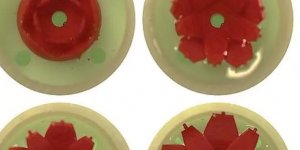| News / Tech News |
Scientists develop method to detect deadly infectious diseases
Researchers have developed a way of detecting the early onset of deadly infectious diseases by using a test so ultrasensitive that it could someday revolutionize medical approaches to epidemics.

This illustration reveals ultrastructural morphology exhibited by coronaviruses. Photo: Alissa Eckert/MSMI; Dan Higgins/MAMS
The test uses an electronic sensor contained in a computer chip. It employs nanoballs — microscopic spherical clumps made of tinier particles of genetic material, each of those with diameters 1,000 times smaller than the width of a human hair — and combines that technology with advanced electronics.
"During the COVID pandemic, one of the things that didn't exist but could have stemmed the spread of the virus was a low-cost diagnostic that could flag people known as the 'quiet infected' — patients who don't know they are infected because they are not exhibiting symptoms," said Mehdi Javanmard at Rutgers University, an author of the study.
The biosensor developed by the team works through a series of steps. First, it zeroes in on a virus' characteristic sequence of nucleic acids — naturally occurring chemical compounds that serve as the primary information-carrying molecules in a cell.
Next, because it amplifies any nucleic acid sequence found in the sample, it makes many more copies, as many as 10,000. Then, it clumps those thousands of specks of nucleic acids into nanoballs that are "large" enough to be detected.
The nanoballs are identified electrically when they are directed individually through minute channels containing electrodes on opposite sides. The process is akin to people walking single file through an airport security gate and being X-rayed one by one.
"Our method involves taking the viral nucleic acid material and rolling it up into a ball of DNA that is large enough to be detected by a cell measurement device known as an electronic cytometer," Javanmard said. "As a result, we can flag the infection at its earliest stages when the concentration is still very low."
The approach works in samples taken from blood and saliva and has been shown to detect early infections by several viruses, including the rhinovirus causing the common cold, and even bacterial infections such as tuberculosis.
The technology, which has been miniaturized and is contained within a computer chip, is small enough to be portable and wearable.
The most immediate use, once commercialized, is expected to be the test's efficacy in flagging viral infections at early stages. Ultimately, the technology also may be used to test bacteria-based illnesses as well as bacterial contamination found in food and water supplies, Javanmard said. (U.S. National Science Foundation)
YOU MAY ALSO LIKE





